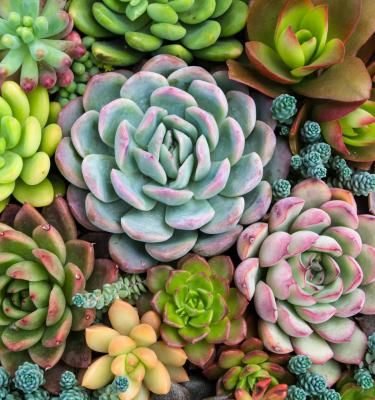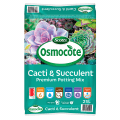There is no doubt that plants are good for us. They make our homes and gardens look attractive and colourful, they give us a sense of purpose and they bring nature into urban environments.
However, did you know that studies have shown that plants can be beneficial for both physical and mental health? From the humble Marigold to the popular Aloe Vera, we’ll delve into what these benefits are and our top tips for making the most of them.
Benefits of Aloe Vera Plants in Homes

This fleshy succulent is popular as an indoor plant as well as in the garden because it is low maintenance and thrives in a range of climates. In addition, Aloe Vera has been used for thousands of years as a natural remedy. Originating from the Arabian Peninsula, it is said to contain powerful antioxidant, antibacterial and anti-inflammatory properties. Aloe Vera has many benefits: it can be used to heal burns, treat psoriasis or eczema, reduce constipation, reduce dental plaque build-up, speed up recovery of mouth ulcers and treat acne.
Aloe Vera Uses
To use Aloe Vera on the skin, snap off a “leaf” and rub the liquid gel that oozes from its base on to the affected area. Speak to your doctor first and do a skin test in case you have any allergies before using it over large areas of the body.
How to Care for Aloe Vera
Aloe Vera thrives in filtered light rather than direct sun, and the soil should be left to dry out slightly (1-2cm) before deeply watering. If the plant is turning brown, it’s a sign of either too many chemicals in the air (from cleaning, for example) or too much sunlight. In pots, use a cacti and succulent potting mix, and don’t overwater. Fertilise occasionally with suitable plant food.
See our Aloe Vera Growing Guide for more information on how to grow these striking succulents, including how to grow them from cuttings.
Benefits of Peace Lily

This glossy-leafed plant makes an Instagrammable addition to your living room and is another low-maintenance house plant. Its name is derived from the related Calla Lily and the resemblance of the flower to the white flag of surrender.
The main benefit of having a Peace Lily or two in your home is that they are said to remove harmful toxins (*VOCs) from the air, while also increasing humidity levels. This promotes better breathing, relieves irritated throats and noses, and acts as a natural air freshener.
How to Use a Peace Lily
Peace Lily will thrive almost anywhere in your home, including in rooms where the ambient light level is medium to low. Note that its flowers do produce some pollen and a light floral scent, which means this plant isn’t always suitable for people with allergies such as hay fever.
How to Care For a Peace Lily
Peace Lily prefers a shady environment and the soil should be kept moist. Its leaves will burn if it is exposed to the direct sun either outdoors or through a window inside.
For more info on how to properly grow and care for Peace Lilies, see our Peace Lily Growing Guide.
Benefits of Snake Plant

This striking plant is native to tropical West Africa and also goes by another rather cheeky name: mother-in-law’s tongue! Studies have shown that this plant emits oxygen while you sleep. Snake Plant also removes harmful VOCs like formaldehyde, trichloroethylene, and benzene from the air, improving your breathing for a better night’s rest.
How to Use Snake Plant
Place a potted Snake Plant in your bedroom. Better still, have one in every room in the house!
How to Care for Snake Plant
Snake Plant is easy to care for – position it in indirect sunlight and allow plants to dry out before watering. In pots use a cacti and succulent potting mix that doesn’t retain too much moisture.
To learn more, read our Snake Plant Growing Guide.
Benefits of Chamomile

Chamomile might look soft and delicate but it is quite tough! Planted between pavers or as a lawn alternative, it doesn’t resent being walked on occasionally. It is a great companion plant for most flowers and vegies where its strong scent deters pests. It will seed prolifically – transplant seedlings to other parts of the garden or give them to friends! Its dried flowers are used to make chamomile tea or infusion that is said to assist with many human ailments. It may also have a calming effect.
How to Use Chamomile
The flowers should be harvested and hung in bunches to dry, after which they can be steeped in hot water to make a tea or to apply to the skin to treat superficial inflammation.
How to Care for Chamomile
There are two common types of Chamomile, English (or Roman) Chamomile and German Chamomile. The German type (Matricaria recutita) t is used for herbal remedies. It prefers cool conditions and part shade. Don’t fuss over it – it is drought tolerant and only needs water occasionally in extended dry periods. Don’t over-fertilise – too much food causes lanky growth and fewer flowers.
Benefits of Rosemary Plants

This woody or perennial herb is well known for its culinary uses where it adds a fresh flavour. Native to the Mediterranean, it can also be used to make perfumes. Rosemary is said to have many other health benefits, as it includes a rich source of antioxidants and anti-inflammatory compounds. It is thought to assist with boosting the immune system and improving blood circulation. As a result, studies say that Rosemary can improve your concentration and enhance your memory.
How to Use Rosemary
You can use Rosemary sprigs to infuse olive oil, lemonade or to make Rosemary salt. Sprigs can also be used in lamb and other meat dishes.
How to Care for Rosemary
It can be easy to grow, but it will need some attention. The low growing shrub likes full sun position and a free draining soil. Avoid watering until the soil is dry. It will need pruning in the spring and again after flowering to keep it neat and compact.
Have thriving Rosemary for you to enjoy at home with our Rosemary Growing Guide.
Benefits of Echinacea

Echinacea, also known as Cone Flower, is widely used to fight infections, especially the common cold, the flu and other upper respiratory infections. Some people take Echinacea at the first sign of a cold, hoping they will be able to prevent the cold from developing.
How to Use Echinacea
The plant's leaves, stems and roots are used in tablets, tinctures, extracts and teas. Echinacea plants contain an impressive variety of active compounds including caffeic acid, alkamides, phenolic acids, rosmarinic acid and polyacetylenes.
How to Care for Echinacea
A herbaceous perennial, grow it from seed or transplant young plants. Plants do not grow well in poorly draining soils that remain constantly damp. Make sure to water well during the first year after transplanting. Once Echinacea is established (2-3 years) it is quite drought tolerant. It prefers a full sun position but will also grow well in partial shade.
Benefits of Passion Flower

Native peoples of the south-eastern USA, Central and South America have used Passion Flower as a mild sedative for centuries. These days, it is mostly used as a dietary supplement for anxiety and sleep problems although it is also reputed to aid pain relief, heart rhythm problems, menopausal symptoms and the symptoms of attention-deficit hyperactivity disorder.
How to Use Passion Flower
Passion Flower tea is an infusion made from the dried leaves and stems of the vine. It is suggested that one cup of Passion Flower tea made from one tablespoon of dried Passion Flower per night should be taken for at least seven days to feel the effects. There are no side effects but the infusion may make you drowsy or dizzy.
How to Care For Passion Flower
Grow Passion Flower vines in an open, sunny position in well-drained soil. Prevent the soil from drying out by applying mulch. The mulch can also protect the roots in winter in cold areas. Fertilise with a controlled release fertiliser in spring and summer for healthy growth. Light pruning over winter will help keep the vine within reasonable bounds.
Benefits of Marigold

Marigold is fast-growing and known for its impressive orange or yellow bloom. This popular plant is said to have antiseptic and antibacterial properties to treat skin diseases, improve wound healing, reduce inflammation and treat infection. Marigold is also believed to be a natural insect repellent, so is the perfect addition to your garden.
How to Use Marigolds
You can dry out the Marigold flowers and brew them as a tea or apply as cream/ointment topically.
How to Care for Marigolds
Marigold is very easy to care for. You can plant them in any area that receives enough sun, and they only need a good watering once a week once they have been established.
To learn more, read our Marigold Growing Guide.








